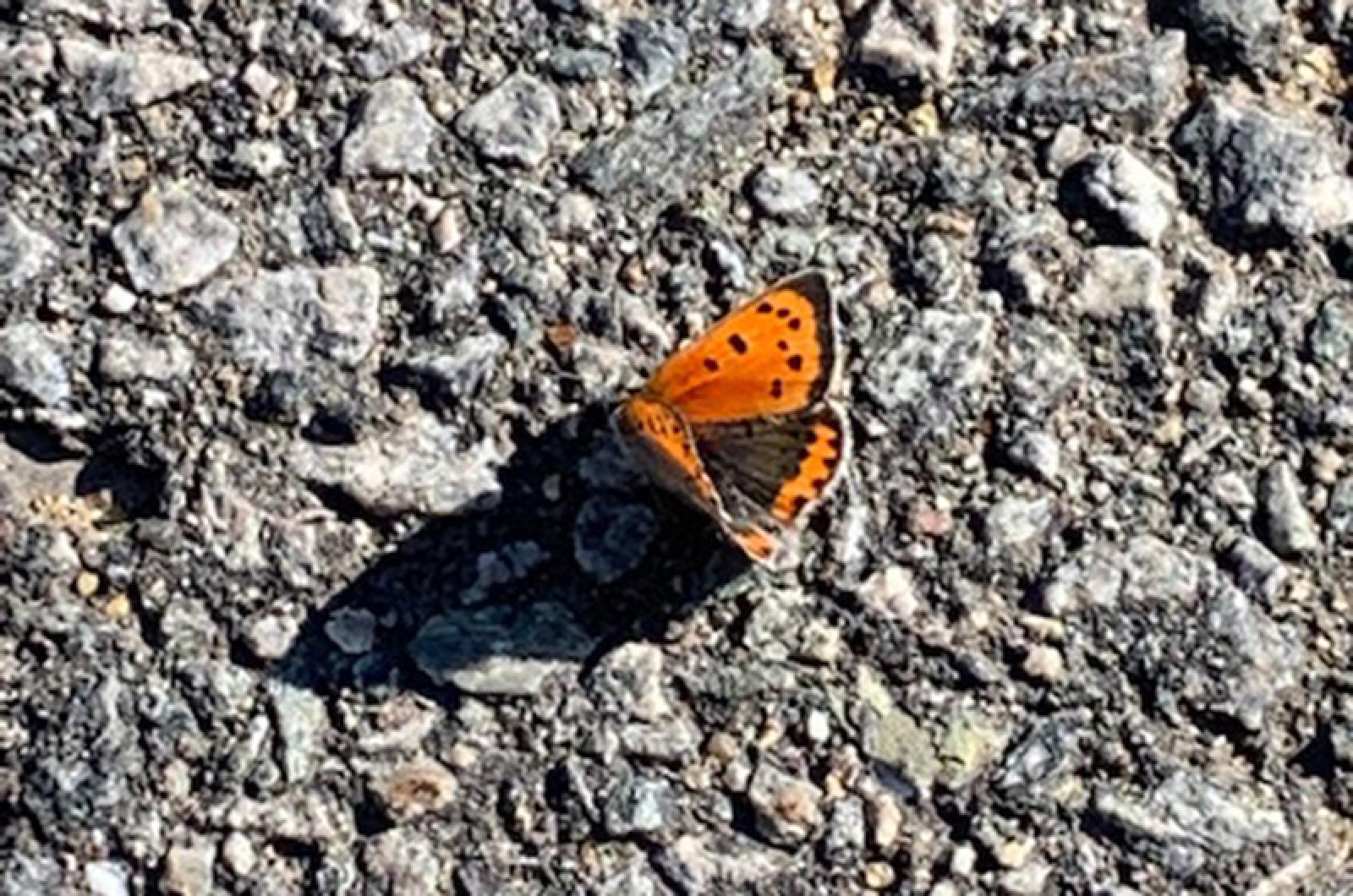What does it mean to be American?
It’s a good (and complicated) question that I won’t endeavor to answer. There is a little butterfly that might have something to say about it, if only it could use its nectar-slurping mouthparts to tell us.
The so-called American copper butterfly could be queried as to where its ancestors came from and the answer might solve a tricky riddle of the species. These orange and brown flouncy fliers have a curious conundrum around their origin in this country.
To understand a butterfly’s lifecycle is to understand its reliance on a larval host plant. The term refers to the plant or plants on which an adult butterfly lays its eggs and which is the preferred (and sometimes only) food source for the caterpillars that hatch from those eggs. In the case of the American copper, its larval food sources are sheep sorrel and curly dock (though some instances of it using garden and mountain sorrel have been observed).
And therein lies the puzzle: since both of these plants are not native to this country, some lepidopterists have suggested that the American copper is actually a washashore, a species from Europe that came with the colonists. To be fair, other scientists disagree, suggesting that this butterfly is native and perhaps adapted its larval plant to these now common (and naturalized) plant species. Only DNA analysis to compare the American copper with the European flame copper will get to the bottom of the identity issue.
No matter its origin, the American copper has certainly become a naturalized citizen in this country. A history of sightings by Massachusetts naturalists puts it solidly in our state as a Commonwealth commoner.
Harvard librarian and entomologist Thaddeus Harris described the American copper as already very abundant in the 1820s. Thoreau observed this butterfly in Concord, reporting seeing 10 of them on a single aster.
Paleontologist and entomologist Samuel Hubbard Scudder was a Bostonian butterfly buff working and writing in the late 19th century. Called the leading lepidopterist of the day, he went further in his surveillance of the species, explaining its preference and profusion in this way: “It is found most commonly in dry, sandy or gravelly, barren spots favorable to the growth of sorrel, and is particularly common by the side of paths in dry pastures or upland highways. It constantly invades the town, and, afire itself, seems to delight in finding the hottest place for its gambols.”
Following Scudder’s reflection, it was not surprising that I spied this species on a West Tisbury roadside and it even stayed still long enough for me to capture its image. Today, we can find this butterfly on the wing from mid-April to frost in our area, with the largest numbers being seen in May, July, and September because of the three overlapping broods that are possible in our region.
The Vineyard is a reported hotspot across the state for this species, also called small or common copper. The etymology of its scientific name lycaena phlaeas is worth digging into. Lycaena might have been derived from Lycia, a name for the goddess Diana. Another source suggests that it comes from lukaina, meaning “she-wolf.” Another intriguing description explains that Lukeion is the old Athens gymnastic school and the butterfly’s flight is similar to that school’s best gymnasts. Phlaeas means to burn up or to flourish — a very apt descriptor.
No matter what you call it, it is always a pleasure to see this all-American butterfly that has brought another pollinator to our flora and delicate diversity to our fauna — and that is as American as apple pie.
Suzan Bellincampi is islands director for Felix Neck Wildlife Sanctuary in Edgartown and the Nantucket Wildlife Sanctuaries. She is also the author of Martha’s Vineyard: A Field Guide to Island Nature and The Nature of Martha’s Vineyard.







Comments
Comment policy »